If there’s something that can’t be missing from most dishes around the world, it’s meat. We live in a world of carnivores, it is a fact. Many even think about reducing their consumption, but where do they get the protein from? The answer may lie in leaf protein.
Beforehand, it may seem like a utopia to propose to Brazilians, people who are in 3rd place in the ranking of countries that consume the most meat, to make this exchange: a piece of steak for some green leaves. But for those who are committed to reducing their consumption of animal protein, this could be a great option.
And does leaf protein exist?
Many think that “leaves don’t even have significant calories, let alone protein.” How is this possible?
Green leaves of many plants are an abundant, affordable and sustainable source of protein suitable for human consumption. Research shows that green leaves, when processed, still manage to maintain 5% of their protein. And, in some leaves consumed fresh, protein amount is comparable to that of milk. This leaf protein is called rubisco.
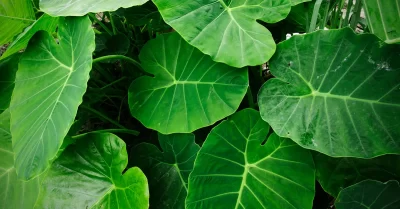
The leaves concentrate the largest amount of rubisco./ Image: HealthLine
And, consequently, rubisco is the most abundant protein on the planet.
Rubisco? I never seen it!
First of all, let’s have a brief science lesson: Rubisco is, simply put, a vegetable protein stored in all leafy greens. In this sense, it is responsible for the photosynthesis process.
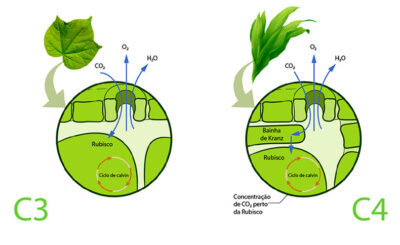
How rubisco is found in the leaves./Image: Elevagro
The good thing is that rubisco can be extracted from practically all green leaves, but the most used are lentil and alfalfa leaves. Lentil leaf protein, for example, contains the highest level of essential amino acids and BCAAs of all plant species. Its protein profile is comparable to that of whey and eggs.
In numbers:
LeaftFoods is a New Zealand company that invested in extracting rubisco from leaves to bring a protein alternative to consumers.

Rubisco extraction at Leaft Foods./ Image: Leaft Foods
And it worked. Not only in terms of profits, but also sustainability.
Leaft’s system uses alfalfa (which is a nitrogen fixer) to extract rubisco from the leaves. And the adoption of this system on just 20% of agricultural land is already showing results: it reduces gas emissions, benefits soil health, improves crop productivity and creates food self-sufficiency for livestock farmers.

Alfafa sprouts./ Image: Cobasi
Upcycled leaf protein
Leaf Protein Co. is a US company with one goal in mind: harnessing the most abundant and sustainable source of protein on Earth: leaves. Using sustainable extraction technology, it is capable of producing nutritious and ecological vegetable proteins for both the environment and consumers.
What sets the company apart is that it works with both seasonal leaves and leaves that are considered waste (look at upcycling coming into action!).

Leaf waste./ Image: Reprodução
Nothing is wasted, if there are leftovers during the rubisco extraction process, they are used to manufacture other products such as animal feed and packaging. Initiatives like this are also beneficial for those who start it all: farmers. They end up being supplied with sustainable alternative crops as our climate conditions become increasingly unpredictable.
Leaves that can push meat off your plate
As we mentioned at the beginning of this post, practically every plant contains rubisco, that is, vegetable protein. Including aquatic plants.
And the company Plantible Foods, from California, uses the leaves of the lemna, an example of an aquatic plant, to extract the protein that will be used as an ingredient to create several products (we’ve already talked about lemna and 6 other unusual proteins here)
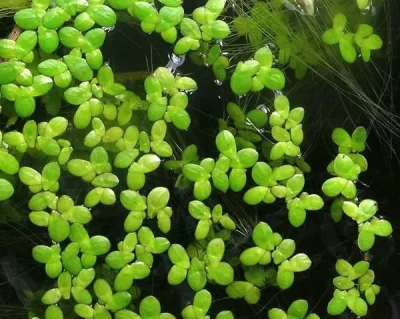
Lemna is also called duckweed./ Image: Aquarius Hobby
But what does it taste like?
Well, if you mix rubisco with water you won’t taste it at all. And that’s the point. The objective is to use rubisco as an industrial ingredient to produce the most diverse foods, the neutral flavor is an advantage.

Rubisco after extracting the leaves./ Image: Leaft Foods
For now, Plantible’s flagship product is the egg. Yes, a substitute for eggs made with leaf protein. In fact, one of the most traditional bakeries in New York, Sweet Maresa’s has already bought the idea and started manufacturing its macarons with rubisco. The idea is that, in the future, the bakery can produce other baked products with the ingredient, such as cakes and cookies.

Macaron made with rubisco instead of eggs./ Image: Plantible Foods
Closer than you think
It’s not just foreigners who get the news. Likewise, here in Brazil, there is a very popular plant that is very rich in protein. You’ve probably heard of it: the ora pro-nobis.

Pro-nóbis ora leaves./ Image: Garden Citrus
Produtos com ora pró-nóbis
A ora pró-nobis vem sendo usada em todo o Brasil para produção de farinhas, pães, bolos, sobremesas, geleias, sorvetes, bebidas, etc.
In fact, ora pro-nobis is so full of protein that some call it “green meat”. Studies even show that it is higher in protein than meat. Yes it’s real. So if you’re reluctant to give up meat because of the protein, here’s the ora-pro-nobis moment.
Ocean Drive, a company specializing in nutrition, showed that this plant is made up of 25% protein. Detail, the meat contains 20%. And anyone who thinks it is only used for making tea is mistaken.
Products with ora-pro-nobis
Ora pro-nobis has been used throughout Brazil to produce flour, bread, cakes, desserts, jellies, ice cream, drinks, etc.
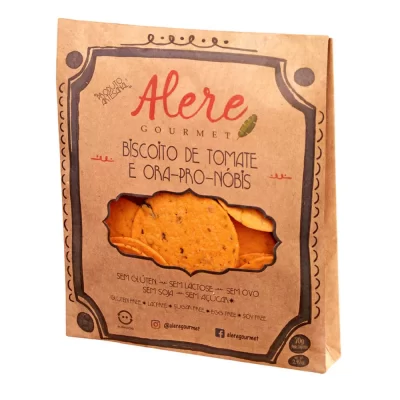
Image: Alere
An ice cream made with 30% raw ora pro-nóbis leaves, milk, eggs, cream and sugar had an acceptability of 74% among those who tried it. Furthermore, enriching products with this leaf makes them richer in proteins. Which can be a great option for those looking to gain muscle mass, for example.
Just to give you an idea, a burger made with the addition of ora-pro-nóbis leaf had a protein content of more than 34% when compared to conventional burgers.
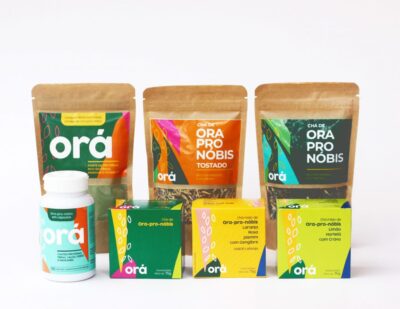
Other examples of products made with the leaf./ Image: Orá
Finally, ora pro-nobis offers more nutrients than just protein. The leaves of this plant are also rich in vitamins A, C and B complex, essential for strengthening the immune system.

There are cosmetics made with the leaf./ Image: Haskell
Not enough, it is also rich in fiber, iron and calcium. In other words, it’s worth giving it a chance, isn’t it?
A long way ahead
In countries like Brazil and Argentina, just to illustrate, meat consumption is cultural. The Sunday barbecue is almost sacred. And, despite the situation, we cannot close our eyes to this.
In other words, it will take a long time before we can see alternating meat consumption with other sources of protein such as leaves, for example.
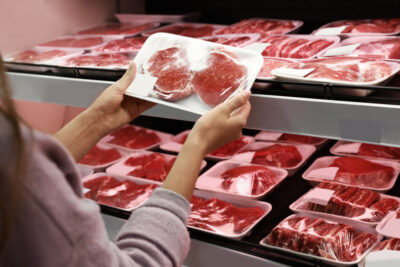
Image: Chernetskaya
Advising people to eat less meat is not enough
In fact, advising people to eat less probably won’t do much. As income increases, meat consumption follows practically the same pace. This comes at a high cost to ecosystems and the climate.
Meat production is the driver behind 57% of all gas emissions from food production. The challenge, then, is not to persuade people to eat more vegetables. It’s like making plant proteins one day taste better than their animal counterparts.
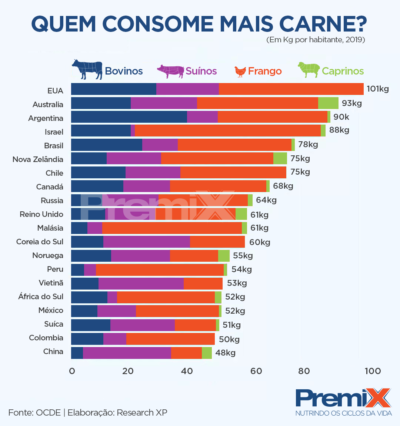
Graph illustrating meat consumption globally./ Image: Reprodução – Premix
In summary, leafy greens present an abundant and versatile source of protein. However, the development of affordable extraction technologies, as well as nutritional value and good pricing, is essential to make it a marketable alternative protein source.
While the varying nutrient profiles and processing methods of different leafy greens present a challenge to achieving this goal, they also present opportunities to develop alternative nutritional sources and reach audiences in different niche markets.
Ultimately, as advances in extraction and processing technologies continue, leafy green biomass could become a significant and sustainable source of protein in the not-so-distant future. After all, there are already people and countries taking steps in this direction.
Sources: The Washington Post, Rubisco Foods, Estado de Minas, BBC, Agron Food Academy, A Lavoura, Food Navigator, News Medical



COMMENTS